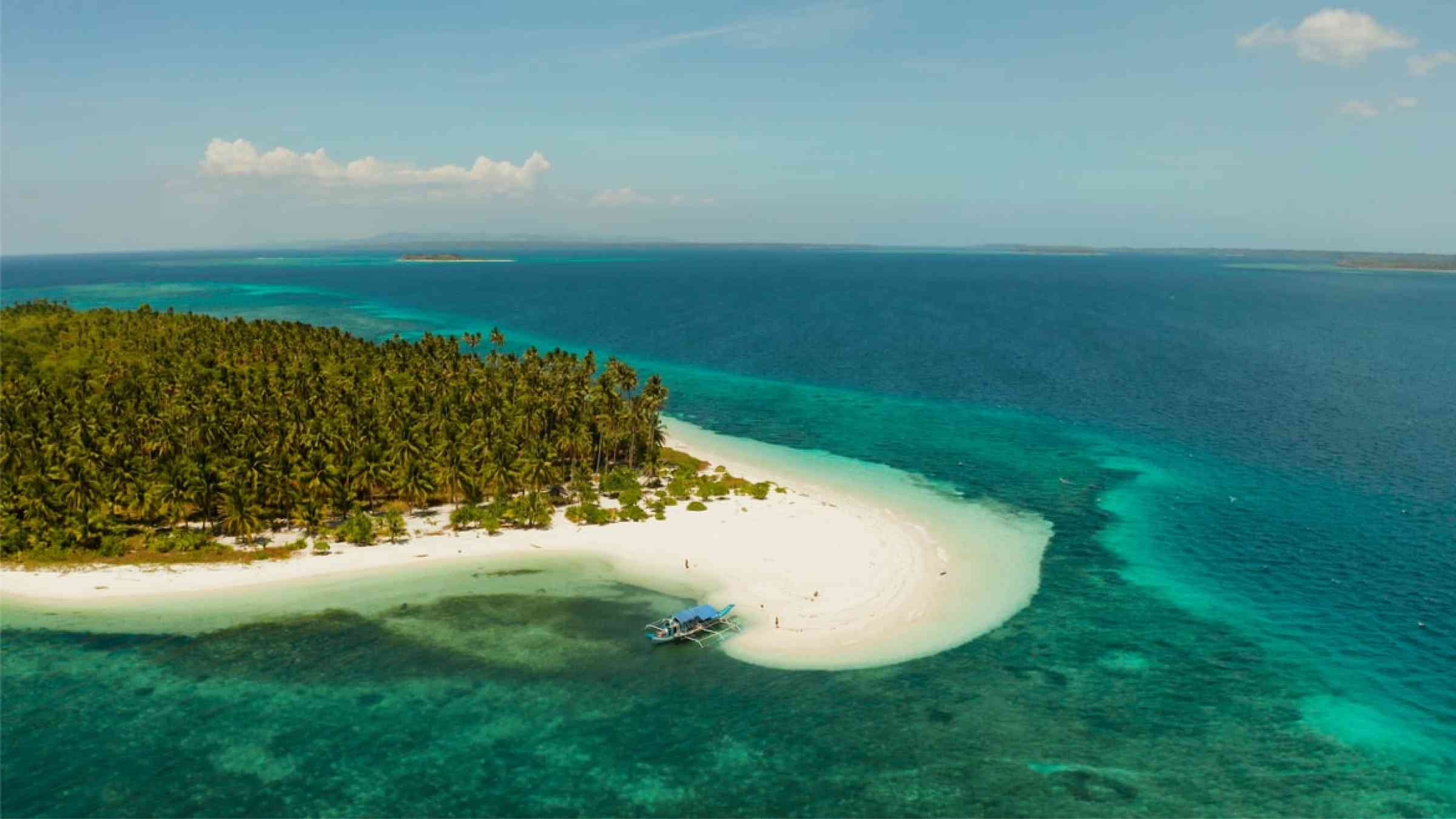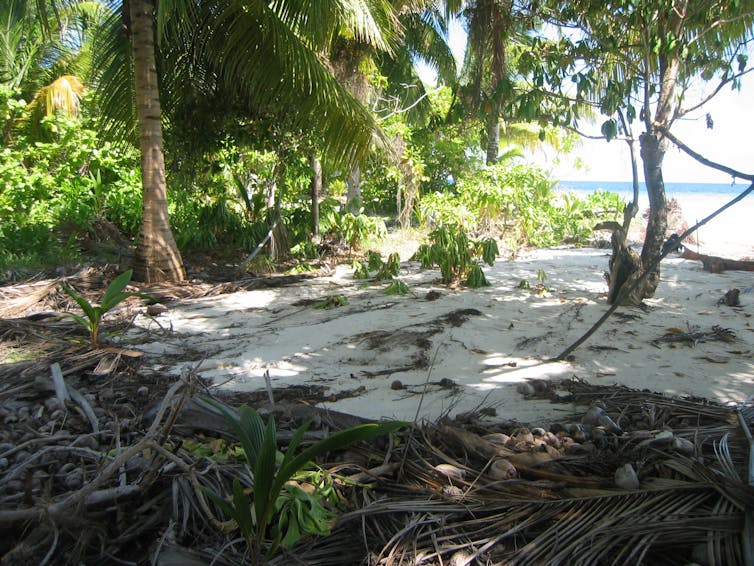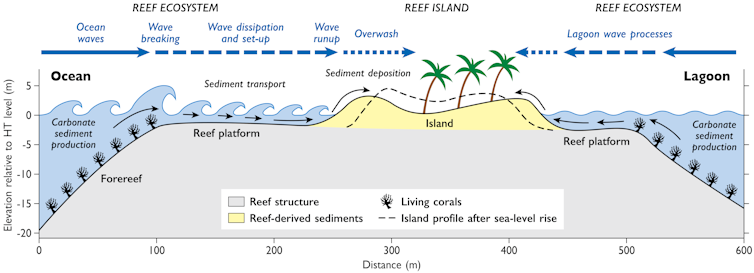Coastal flooding could save atoll islands from rising seas – but only if their reefs remain healthy

Communities living on coral atoll islands, which rarely rise more than four metres above the surface of the sea, face a strange paradox.
On the one hand, these islands are among the most sensitive to the effects of climate change, with sea-level rise and potentially increasing storminess expected to make coastal flooding events more frequent and intense. On the other hand, when waves overwash such islands during extreme weather events, new sediment from their surrounding coral reefs is typically deposited on the island, increasing its elevation.
So while the process of wave overtopping can be very disruptive and damaging to island communities, it also seems to nurture the long-term resilience of these islands, enabling them to persist despite rising sea levels.
Our recent study, conducted alongside coastal scientist Eddie Beetham, suggests that hugely disruptive and potentially life-threatening extreme weather events may actually be required for the long-term survival of atoll islands and their communities.
But the sediment required to make this happen is derived from coral reefs, which are also under threat from climate change. While damage to coral reefs may actually benefit atoll islands with increased coral detritus over the next ten years, long-term damage to the coral reef ecosystem, over the coming decades, will leave atoll islands without enough sediment to naturally adapt to sea-level rise.
Making an atoll island
About a million people live on coral atoll islands, with about half of these confined to the atoll island nations of Kiribati, the Maldives, the Marshall Islands and Tuvalu.
All atoll islands are low-lying, commonly less than two metres above sea level. They’re composed of the sediment that washes up from the living coral reef platforms that surround them, with material gradually deposited on the island’s shoreline by wave and tide-generated currents.
Atoll islands are built upon coral reefs. Gerd Masselink/Jamie Quinn, Author provided
The reef platform is usually located around the low tide level. Because this acts as a natural wave barrier, coral reefs offer atoll islands significant protection against energetic wave action. Nevertheless, atoll islands are episodically overwashed by strong waves, leading to nuisance flooding and even complete island inundation.
 Overwash from powerful waves deposits sediment on an island’s shoreline. Paul Simon Kench, Author provided
Overwash from powerful waves deposits sediment on an island’s shoreline. Paul Simon Kench, Author provided
And as the sea level rises, flooding events on atoll islands are expected to become more frequent and extreme. The Intergovernmental Panel for Climate Change (IPCC) recently suggested that sea levels will rise 0.44-0.76 metres by 2100 according to their “middle-of-the-road emission scenario”. A study published in 2018 predicted that sea-level rise could render most atoll islands uninhabitable by the middle of this century.
But that study’s gloomy outlook only considered the adverse effects of overwash and not its potential island-building benefits. When overwashed onto the shoreline, sediment from coral reefs can increase an island’s elevation. This sediment can also be reworked from the island shoreline, reducing an island’s width but increasing its height. Both processes take place relative to sea-level rise, which means atoll islands should rise at roughly the same rate as the sea itself.
Atoll islands adapt to rising sea levels in four main ways. Paul Simon Kench/Jamie Quinn, Author provided
All this relies upon waves, storms and floods. One recent study suggested that the Maldives were first created during a period with higher-than-present sea levels and larger waves. Climate change and sea level rise could recreate the environmental conditions under which these islands first formed.
Living with rising seas
Atoll island communities nevertheless face the prospect of becoming climate change refugees. To mitigate the threat of rising seas, some atoll islands have been building coastal defences to prevent further flooding. This is the default option for densely populated atoll islands such as Malé, the capital of the Maldives. But coastal protection is expensive and requires regular upkeep in line with rising sea levels. Assuming the coastal defences are effective in preventing island flooding, this also means that overwash and islands adjustment cannot take place.
Accepting that flooding provides a natural mechanism for island elevation rise opens up an alternative set of adaptation strategies. But this means exposing islands to disruptive and dangerous weather, from which their communities, infrastructure and fresh water sources must be protected.
That could be achieved by transitioning the infrastructure of islands to one that is dynamic and flood-proof so it can move with the evolving island. Homes could be constructed on stilts, reflecting historic cultural adaptations. Floating complexes of homes could even be built. It’s also possible to assist the island’s natural adaptation mechanism by supplying the island with additional sediment, referred to as sandscaping.

Our research investigated how atoll islands shapeshift over time. Sue Owen, Author provided
Ultimately, personal safety and risk reduction will be critical for communities that choose to remain living on remote islands in the coming decades. Early warning systems that accurately forecast wave overtopping and flooding events will need to be coupled with disaster preparation and evacuation systems to reduce the risks to people and property during storm events.
Not all good news
Adapting atoll island communities to sea level rise through their islands’ natural building mechanism is not universally applicable. In fact, it may only be viable for rural islands with low population densities. More site-specific investigations are required to understand whether and where this kind of adaptation strategy is feasible.
We also mustn’t disregard other adverse impacts of climate change for coral reef island nations. Most importantly, threats to coral reef ecosystems, due to increased water temperature and ocean acidity, is reducing reef biodiversity and leading to economic consequences for islands closely tied to their reefs. Healthy reefs provide islands with a constant supply of sediment; dead reefs will not.
But in relation to future habitability, the option to allow islands to naturally evolve and rise with sea levels should be considered alongside man-made coastal protection and community relocation. Scientists must work with island communities to determine which options are best for their long-term survival. In many cases natural evolution would be more cost-effective and sustainable than coastal defences, and less disruptive and traumatic than relocating islanders.


